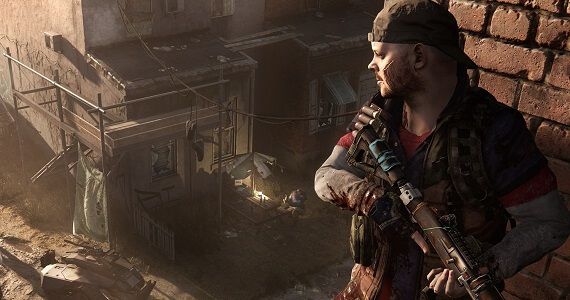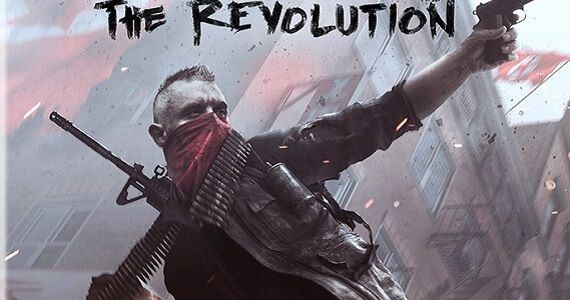When Crytek and Deep Silver officially announced Homefront sequel Homefront: The Revolution with a cinematic trailer and batch of screenshots, the reaction from gamers was more cautious than excited. The original Homefront received mixed reviews due to a short single player campaign and what many felt was a weak story, and with titles like Call of Duty: Advanced Warfare and The Division on the way, the upcoming release schedule isn't exactly hurting for brown-grey near-future military shooters.
The Homefront series is set in a future version of the USA, which has been invaded by North Korea (just go with it) and is now held under the brutal control of the Korean People's Army. Homefront: The Revolution is set four years into this occupation, and the player takes on the role of a freedom fighter who is using guerrilla warfare to try and weaken Korea's hold on the city of Philadelphia.
Crytek was tasked with developing a sequel to Homefront after THQ shut down original developer Kaos Studios, and when THQ went bankrupt in 2012, Crytek took over the franchise entirely. Speaking to Eurogamer, Crytek UK game designer Fasahat Salim isn't shy about acknowledging the first game's shortcoming's, or about Crytek's intentions to make massive changes to the core gameplay.
"The original game did have its flaws, there's no secret about that. It didn't quite reach the level that people were hoping for... We started off with THQ coming to us to work on the next Homefront. That was exciting because we saw the potential that Homefront had and could offer - we wanted to take that premise forward. But we were still working on a very linear scale where it was a level by level shooter.
"Once we acquired [Homefront] after the whole THQ business in 2012, that gave us the flexibility to push out from that and see how far we could take it. All of a sudden it was up to us how big we wanted the game to be - we were in full control of it. That was really exciting. It was then we made the call to make this a free-roaming world where the player isn't restricted by levels."
As we speculated when the game was announced, it sounds like Homefront: The Revolution will integrate single player and co-operative play in a similar way to Borderlands and Destiny. Salim explains, "The idea is that you come together to do something you all want to do - if you come across a mission you think is cool, or want someone to help you out."
Homefront: The Revolution's protagonist, Ethan Brady, is described by Salim in an interview with Joystiq as "an average, everyday guy," a character description that is becoming all too depressingly familiar. If there was one way for Homefront: The Revolution to differentiate itself from the swathes of similar games on the market, then picking a protagonist with a defining characteristic beyond "everyman" would have been a good start. If the trailer is to be believed then Ethan is - brace yourselves - a generically good-looking white guy in a beanie hat.
The summary of the main character is far from promising and the Korean occupation narrative failed to impress in the first game, but at least we can say that the gameplay aspects of Homefront: The Revolution sound promising. Although the game is set in the future, Ethan and his fellow freedom fighters are badly outgunned by the KPA and must rely on resourcefulness and guerilla warfare to leave their mark.
Philadelphia is divided into Red Zones (lawless badlands where the KPA fears to tread), Yellow Zones (run-down areas where the KPA keeps a close eye on the population) and Green Zones (opulent areas where KPA officials live). Between this and Salim's promise of an "evolving open world" that responds to the player's actions, there's a likelihood that Homefront: The Revolution will have stronghold missions similar to those in Far Cry 3 and the Assassin's Creed series.
Most of the missions will be of the "hit-and-run" type, says Salim, with the player either sabotaging the KPA infrastructure or assassinating its leaders. In order to acquire the tools for this kind of work, the player must scavenge for resources to build and upgrade tools and weapons used in the fight against the occupation. Missions will require strategic planning, since simply running in and shooting everything in sight is not an option.
Do these details leave you optimistic for Homefront: The Revolution, or are you waiting to hear more? Tell us in the comments how Crytek could best improve the franchise.
Homeland: The Revolution will release in 2015 for PC, Mac, Linux, Xbox One & PS4.
_____


